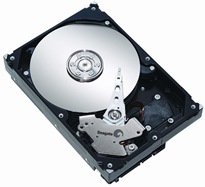Amit has collected some excellent resources relating to sounds emitted by a failing hard disk. If your hard disk is making strange sounds it’s possible that it nearing it’s end, because noises are often symptoms of a hard disk that is about to go kaput.
A typical healthy hard disk should be almost soundless. However, not all sounds coming out of your computer cabinet may be signs of trouble. Often the culprit is a noisy fan or loose screws. If you have eliminated all external sound sources and still hear clicking or whining noises from the hard drive, then visit Datacent’s resource of failing hard drive sounds.
 Datacent has an amazing collection of sounds recorded from actual hard disks with specific problems. A wide range of hard disks from different manufacturers are present. From the sounds it’s possible to determine whether the hard disk has a head problem or a platter or bearings problems etc. Some of the sounds are very feeble and has to be listened intently.
Datacent has an amazing collection of sounds recorded from actual hard disks with specific problems. A wide range of hard disks from different manufacturers are present. From the sounds it’s possible to determine whether the hard disk has a head problem or a platter or bearings problems etc. Some of the sounds are very feeble and has to be listened intently.
Another site, EcoDataRecovery has a few resources of sound emitted by bad hard disks. Just hover the mouse over the type of sound to know the possible causes of it.
Make sure you don’t hear any of these sounds in your hard disk because it can spell disaster. If you are unfortunate enough to hear it, then check out these data backup and recovery tools.
Related articles: Monitor the health of your hard disks, Learn to keep your PC cool to extend life of devices and components

If your drive is making unusual noises it is vital to immediately backup your important data. Do not delay this. Do not continue to operate your computer, do not run chkdsk or defrag or attempt to "fix" the problem. Any of these things may make data recovery impossible.
ReplyDeleteLarry Miller
Microsoft MCSA